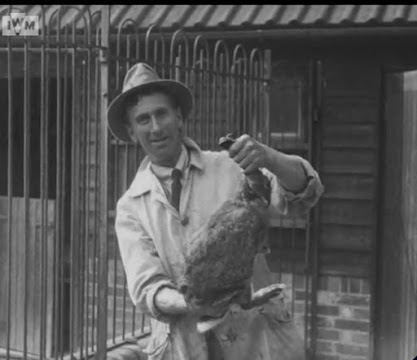In August 1918, the Ministry of Information made a film about rural life in the North Dorset village of Iwerne Minster. Filmed during the last summer of World War I, this remarkable record has survived and still is available to view today.
The silent film features many of the Iwerne Minster villagers engaging in country activities such as butter making, poultry farming and beekeeping. There is also the local cattle market, hurdle making and the breaking in of a horse. Apparently, everyone in the village kept pet rabbits at the time. Children are seen entering their school and maypole dancing.
Although generally painting an idyllic picture, there are still reminders of the war. There are scenes of German prisoners of war being put to work on the land with local farmers. They haul wood to be used for aircraft manufacture. While close to the village pump there was a notice board, known as the ‘War Office, where news from the battlefronts and from local newspapers was posted.
While made for propaganda purposes and with a rose-tinted hue, the film does provide a rare record of life in North Dorset around a century ago. No doubt Iwerne Minster was chosen for the film due to the influence of land owner and ‘lord of the manor’, James Ismay who was also a director of the White Star shipping line. He cared deeply for the village and he had repaired buildings, set up a shop and also paid for a village nurse and surgery. His care, attention and influence made Iwerne Minster an ideal choice for the film.
The film ends ‘Long live Iwerne Minster’.
‘Life at Iwerne Minster – August 7th and 8th 1918’ can be viewed on line on the Imperial War Museum website.
(Illustrations: 1 - Iwerne Minster children maypole dancing : 2 - Prized pet rabbit: 3 - Pigs for sale: 4 - German prisoners of war. Credits Imperial War Museum.)




Comments
Post a Comment